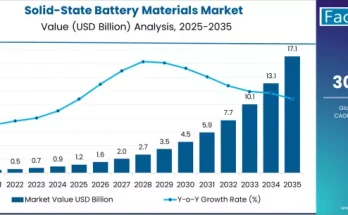The pharma blisters packaging market is experiencing significant growth as the pharmaceutical industry increasingly emphasizes product safety, patient compliance, and supply chain efficiency. Blister packaging, which protects individual doses of tablets and capsules in pre-formed cavities, has become a standard in pharmaceutical packaging due to its ability to maintain drug integrity, extend shelf life, and enhance patient convenience.
As healthcare systems focus on patient-centered care and regulatory agencies tighten guidelines for drug storage and handling, the demand for advanced blister packaging solutions is intensifying. This trend reflects the broader shift toward innovative, reliable, and user-friendly pharmaceutical packaging solutions.
Market Overview:
Pharma blister packaging provides an effective method for protecting drugs from moisture, oxygen, light, and contamination. It offers advantages such as dosage accuracy, tamper resistance, and ease of administration, making it highly valued across hospitals, retail pharmacies, and patient care settings.
The market encompasses various packaging types, including strip packs, cavity packs, and multi-layer blister cards. Material innovations, such as PVC, PVDC, aluminum, and specialty films, are enhancing durability, barrier properties, and sustainability. Manufacturers are also developing child-resistant and senior-friendly designs to improve safety and compliance.
Advances in automated blister packaging equipment and quality control systems are improving production efficiency, reducing waste, and ensuring consistent product quality. These technological developments are allowing pharmaceutical companies to meet regulatory requirements while delivering user-friendly packaging solutions that enhance patient adherence.
Regional Insights:
North America represents a leading market due to stringent regulatory requirements, high adoption of advanced packaging technologies, and a robust pharmaceutical manufacturing infrastructure. The region emphasizes quality assurance, safety, and regulatory compliance, which drives the adoption of modern blister packaging solutions.
Europe is another significant market, supported by strict quality control standards, comprehensive pharmaceutical regulations, and increasing awareness of patient safety and packaging efficiency. European manufacturers prioritize sustainability, innovative designs, and compliance with Good Manufacturing Practices (GMP).
Asia-Pacific is emerging as a high-growth region, fueled by expanding pharmaceutical production, rising healthcare infrastructure, and increasing demand for high-quality packaging solutions. Countries such as India, China, and Japan are investing in advanced manufacturing technologies, driving adoption of blister packaging across prescription and over-the-counter medications.
Latin America and the Middle East & Africa are gradually increasing their use of blister packaging, driven by improving healthcare access, rising patient awareness, and adoption of standardized pharmaceutical packaging practices.
Innovations and Regulatory Trends:
Innovation in the pharma blister packaging market focuses on improving drug protection, patient compliance, and environmental sustainability. Manufacturers are developing materials that provide superior barrier properties, are recyclable, or have reduced environmental impact.
Smart blister packs are gaining attention, incorporating digital features such as QR codes, NFC tags, and electronic adherence monitoring to enhance patient engagement and track medication usage. Tamper-evident designs, child-resistant features, and ergonomic pack shapes are also becoming standard to ensure safety and convenience.
Regulatory frameworks play a critical role in shaping product design, material selection, and quality assurance processes. Compliance with global pharmaceutical packaging standards, safety guidelines, and labeling requirements ensures market acceptance and promotes patient trust.
Key Trends & Forecast:
The pharma blister packaging market is evolving through several key trends:
- Shift Toward Patient-Centric Packaging: Packaging solutions that simplify dosing, improve adherence, and enhance user experience are gaining traction.
- Sustainability and Eco-Friendly Materials: Demand for recyclable, biodegradable, and low-environmental-impact materials is rising.
- Smart and Digital Packaging: Integration of digital tools for tracking, monitoring, and patient engagement is transforming the market.
- Automation and Efficiency: Advanced machinery for high-speed production, quality control, and precision filling is reducing manufacturing costs and enhancing reliability.
- Global Regulatory Alignment: Harmonization of packaging standards across regions supports cross-border pharmaceutical distribution and market expansion.
These trends underscore the market’s focus on innovation, safety, and efficiency while addressing environmental and patient-centric demands.
Applications & End-Use Outlook:
Pharma blister packaging serves multiple applications and end-use segments:
- Prescription Medications: Protects dosage integrity, facilitates patient adherence, and ensures compliance with regulatory standards.
- Over-the-Counter (OTC) Products: Enhances convenience, tamper evidence, and brand differentiation for consumer healthcare products.
- Hospital and Institutional Use: Provides secure, organized, and traceable medication management for inpatient care.
- Nutraceuticals and Dietary Supplements: Ensures freshness, dosage accuracy, and safe delivery of vitamins and supplements.
The versatility of blister packaging allows pharmaceutical companies to meet diverse consumer needs, improve medication adherence, and maintain product integrity across multiple distribution channels.
Competitive Landscape:
The pharma blister packaging market is highly competitive, featuring global manufacturers and regional players striving for innovation, quality, and market differentiation. Companies are investing in R&D, automation technologies, and sustainable materials to gain a competitive edge.
Collaborations with pharmaceutical firms, technology providers, and supply chain partners are enabling faster adoption of smart and patient-friendly packaging solutions. Brand differentiation through innovative design, digital integration, and regulatory compliance remains a key focus for market leaders.
Conclusion:
The pharma blister packaging market is poised for sustained growth as pharmaceutical companies, regulators, and healthcare providers prioritize safety, compliance, and patient-centric solutions. With innovations in materials, automation, and smart packaging technologies, blister packs continue to enhance drug protection, usability, and adherence.
Companies that focus on quality, sustainability, and digital integration will be best positioned to capitalize on evolving industry trends and meet the growing demand for efficient, reliable, and patient-friendly pharmaceutical packaging solutions worldwide.
Browse Full Report – https://www.factmr.com/report/452/pharma-blisters-packaging-market



